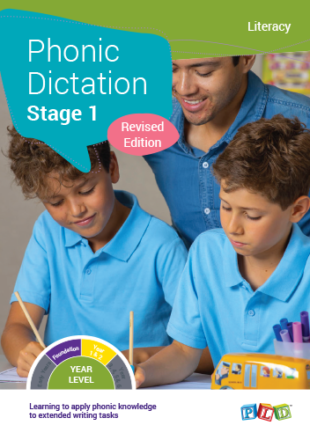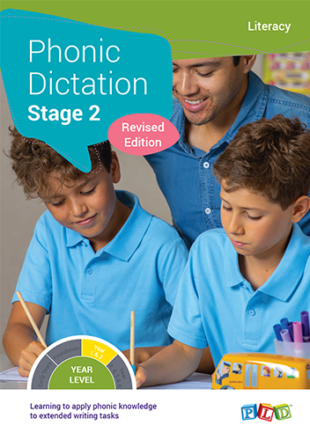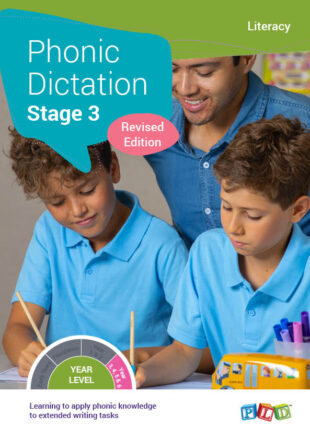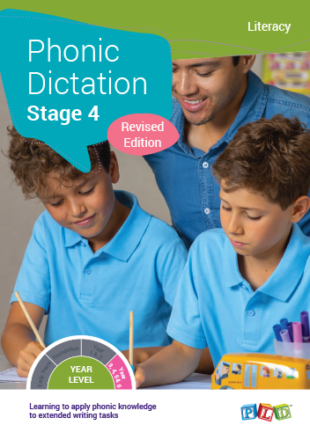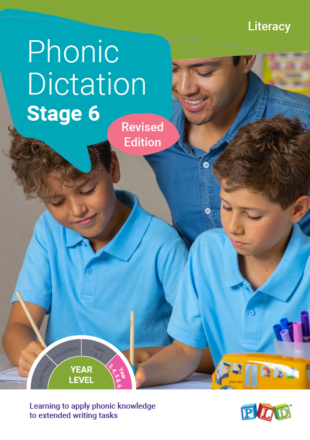Home practice of phonic concepts taught at school through the use of decodable reading material provides students with an opportunity to consolidate their learning and increase the amount of oral reading time provided. Students need multiple opportunities and extensive practice of reading in connected text to support autonomous word recognition (Kuhn et al., 2010).
What are Decodable Texts
Decodable texts are designed to consist of phonetically regular words using letter-sound correspondences previously taught (Cheatham & Allor, 2012). This makes decodable texts particularly beneficial for early readers in Foundation/Prep to Year 1 or older struggling readers, who are yet to master the most commonly found phonic concepts in English literature.
How to Facilitate Reading Fluency
While both repeated and continuous reading are effective strategies for improving reading fluency, expanding the variety and volume of texts read accelerates fluency development more than repeated reading alone (Kuhn et al., 2010). However, providing a sufficient range of decodable books can be challenging due to limited resource budgets. An effective solution is using PLD’s dictation passages as home reading materials.
PLD’s Phonic Dictation resources, focusing on specific phonic concepts, offer students numerous opportunities to practise. For example, a passage such as ‘Going Fishing’ targets the ‘sh’ letter-sound. Engaging students in repeating reading activities can be challenging. To address this, PLD has incorporated timed reading activities, which have proven effective in enhancing students’ engagement. In our experience, students often enjoy the challenge of beating their previous times. This method also encourages students who are slow at decoding words to increase their speed, gradually moving towards reading words fluently without needing to sound out each word (note that it is appropriate for Foundation/Prep students to decode most words when they are beginning to learn how to read, reading automaticity begins near the end of Foundation/Prep and in Year 1).
The Phonic Dictation resources can also be used as a way to provide continuous or varied reading opportunities as multiple different passages can be provided to students throughout the week. Additionally, the revised version of PLD’s Phonic Dictation passages now includes three different passage lengths, accommodating students who might find longer texts daunting.
How to Facilitate Spelling Transference into Writing and Proofreading Skills
Beyond reading, PLD’s Phonic Dictation also provides students with the opportunity to practise their writing and proof-reading skills. Instructions on timed reading, dictation, and editing misspelt passages are included and support the transference of single word spelling abilities into writing tasks.
Example of a Weekly Routine Utilising Phonic Dictation Passages
Monday: Read the allocated passage and time the reading (could be set for homework). Task 2: A simple comprehension task, in which students illustrate (and label) as many elements in the passage as is possible.
Tuesday: Read the allocated passage and time the reading (could be set for homework). Task 3: Copying and handwriting practice, by rewriting the passage.
Wednesday: Read the allocated passage and time the reading (could be set for homework). Task 4: Editing practise by identifying and correcting the errors within the passage.
Thursday: Read the allocated passage and time the reading (could be set for homework). Task 5: First attempt at the rewriting of the passage in the context of dictation.
Friday: Read the allocated passage with expression. Task 5: Second attempt at the rewriting of the passage in the context of dictation.
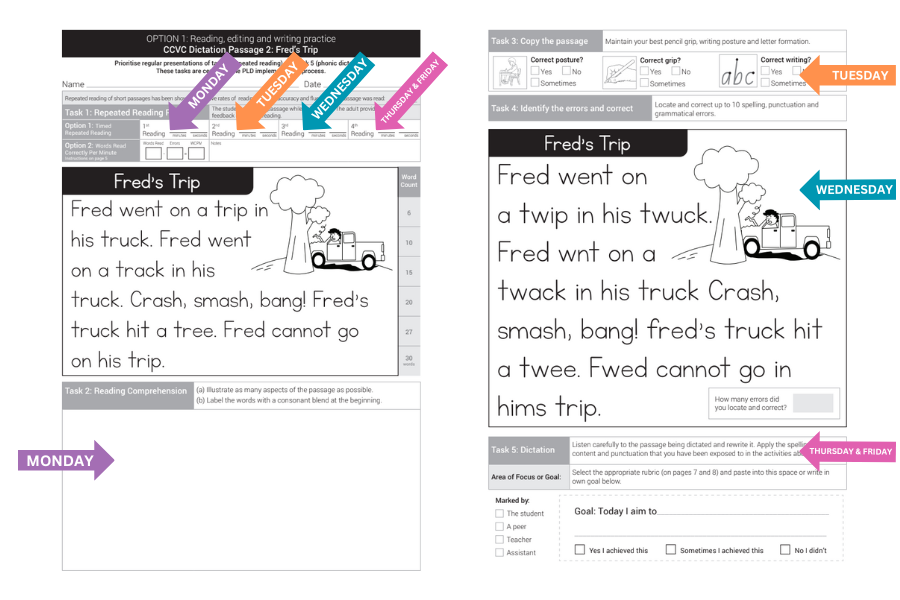
Examples of PLD Dictation Reading Material
We have phonic dictation tasks for all PLD stages. There are also companion videos you can watch for more details.
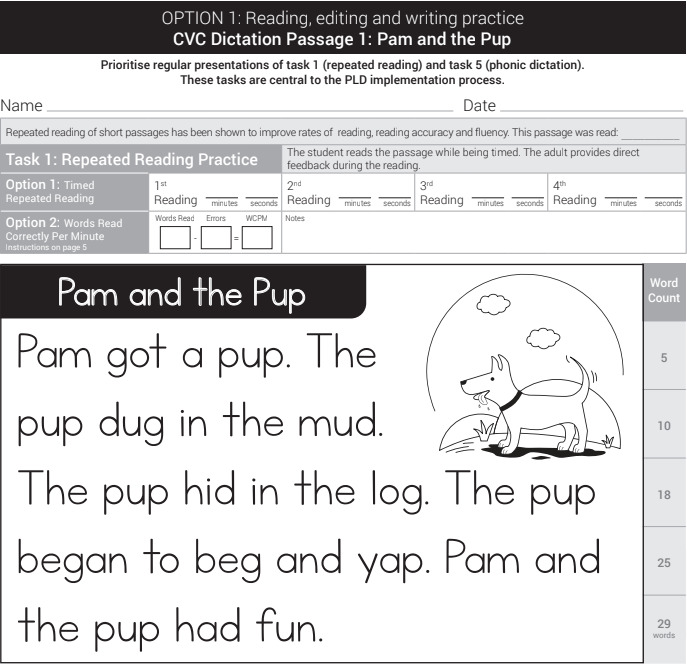
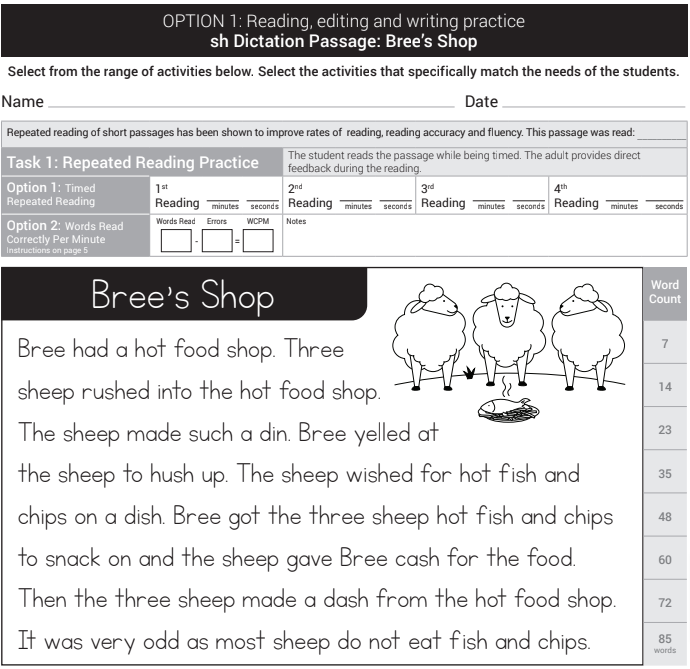
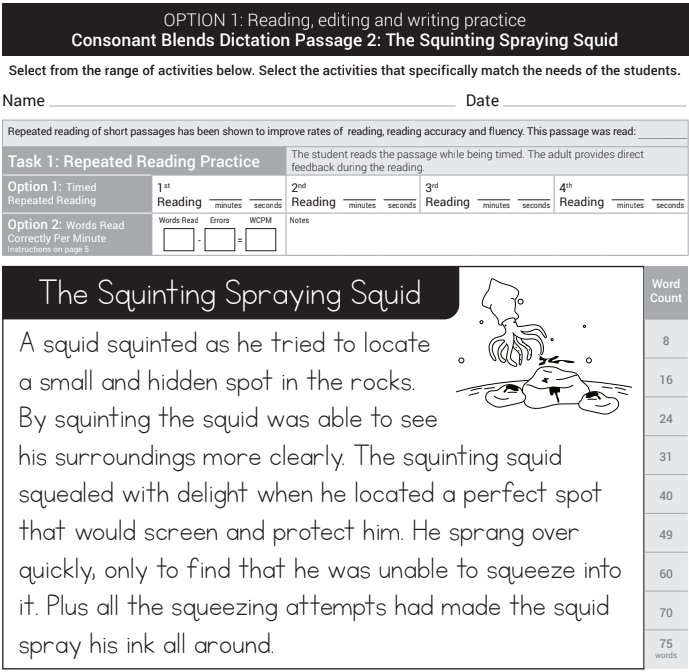
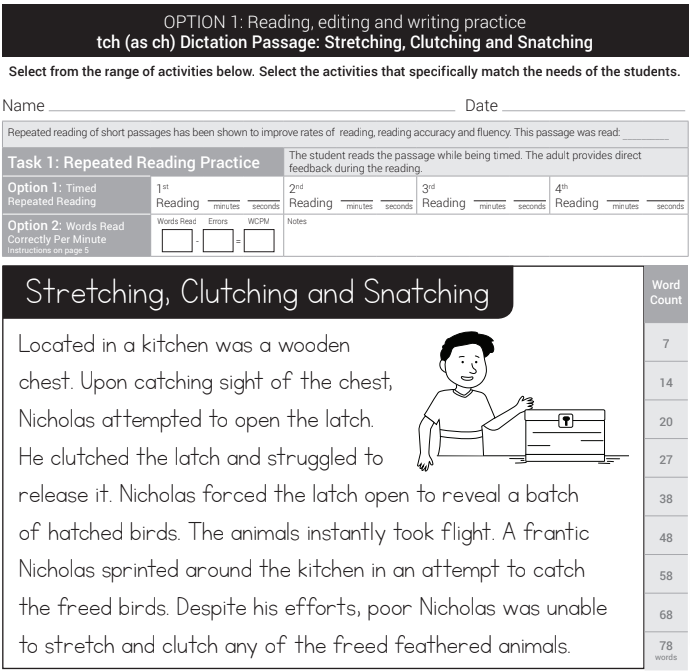
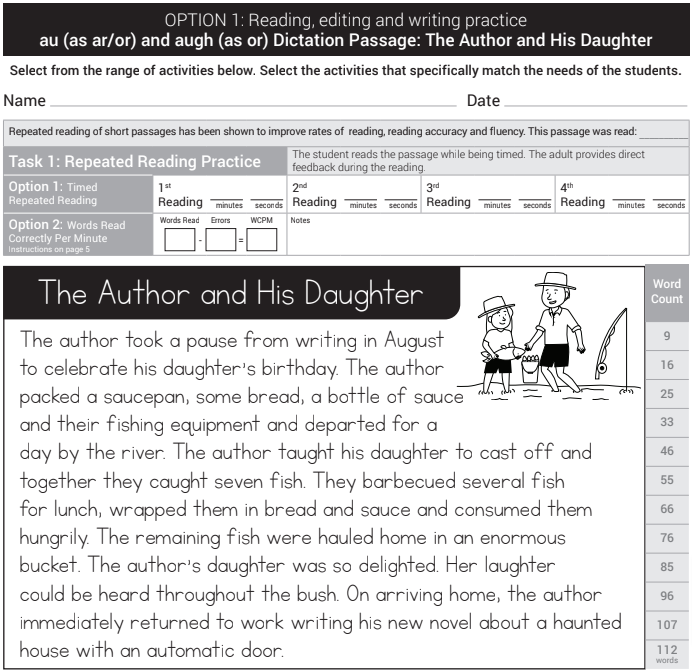
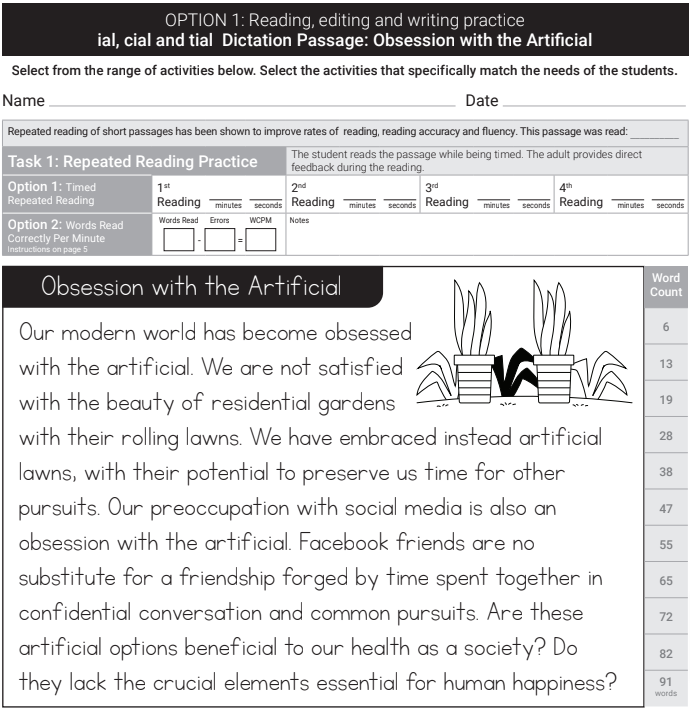
Phonic Dictation Resources
Designed to support structured literacy instruction, PLD’s Phonic Dictation books (Stages 1–6) offer 42 to 74 phonic passages per stage. Available in print or digitally via a school licence for flexible classroom integration.
What Additional Materials are There to Support Home Reading
Alongside these dictation passages, we recommend decodable reading books for a broader range of reading practice. PLD offers a variety of home reading sets for beginning readers. Additionally, shared book reading using rich texts is vital for early readers as they do not have enough phonic knowledge to read these texts independently. PLD supports shared book reading through the use of comprehension question sheets for popular picture books, aiding in the development of advanced vocabulary, literal and figurative language, simple to complex comprehension questions, and narrative retelling skills. Parents can be provided with information sheets and videos explaining how to complete these activities here.
Additional Readings
- Why Decodable Reading Books Are Superior to Whole-Language Books When Learning to Read
- How Do Decodable Readers Function Within The PLD Process?
- Strategies to Improve Reading Fluencyhttps://pld-literacy.org/reading-fluency-continuous-reading-vs-repeated-reading/
References
Cheatham, J. P., & Allor, J. H. (2012). The influence of decodability in early reading text on reading achievement: A review of the evidence. Reading & Writing, 25(9), 2223-2246. https://doi.org/10.1007/s11145-011-9355-2
Kuhn, M. R., Schwanenflugel, P. J., & Meisinger, E. B. (2010). Aligning theory and assessment of reading fluency: Automaticity, prosody, and definitions of fluency. Reading Research Quarterly, 45(2), 230- 251



 print
print